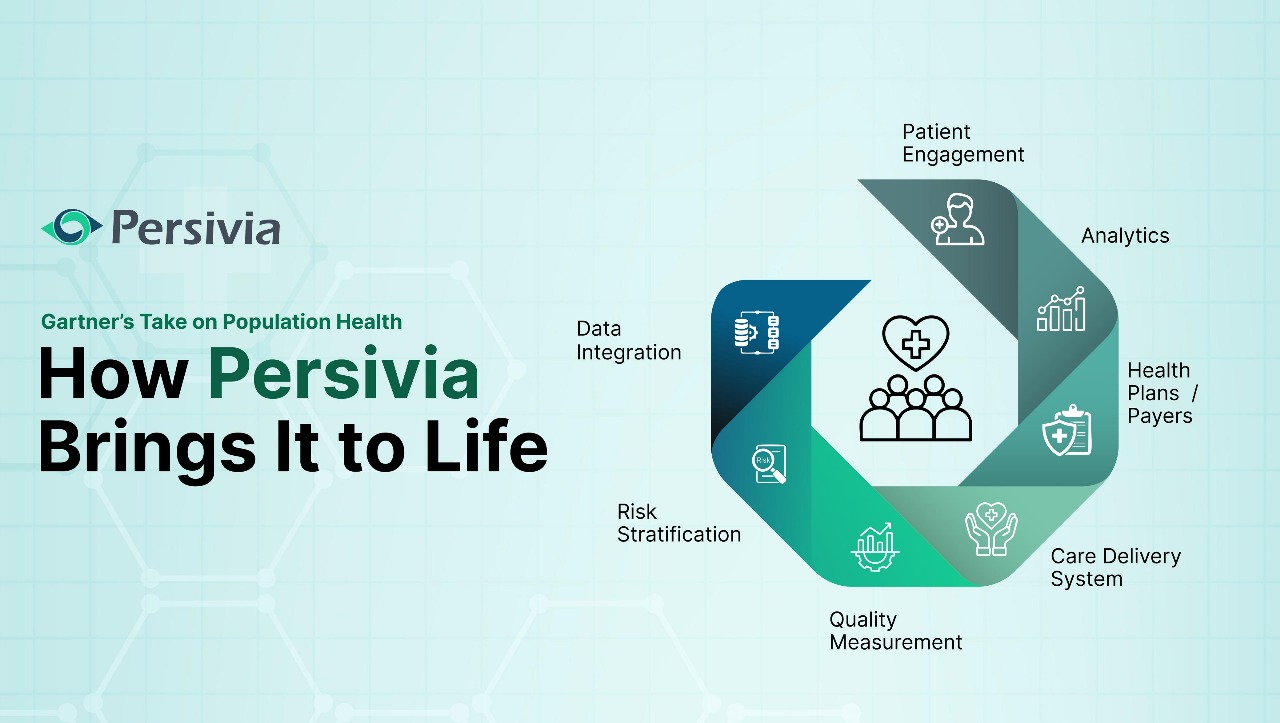In a recent insightful research, Gartner published “Population Health Management Framework for Healthcare CIOs” that provides valuable guidance for healthcare organizations navigating the complex landscape of value-based care. As the healthcare industry continues to transition from fee-for-service to value-based models, Population Health Management (PHM) has become a critical operational model for improving health outcomes, managing costs, and enhancing patient experience.
Key Findings from the Gartner Report
The Gartner report highlights several important observations about the current state of PHM:
- Lack of clarity in PHM definition: Many healthcare organizations struggle to define PHM clearly and lose sight of its core value due to sector-specific complexities.
- Coordination challenges: While organizations performing PHM-related activities often target the same individuals (especially those with complex clinical and social needs), significant business and technology challenges disrupt effective coordination.
- Technology maturation issues: PHM technology is developing but progressing slowly due to a lack of standardization in payer contracting, changing regulations, evolving quality measures, etc.

Gartner’s Population Health Management Framework: The Engine Behind Population Health Success
At the heart of Gartner’s Population Health Management Framework is a comprehensive technology stack that supports and enables the operational components necessary for success. The above image illuminates this critical infrastructure, showing how three fundamental technology layers work together to achieve PHM’s triple aim of managing costs, improving health, and enhancing experience.
Persivia’s CareSpace® population health management platform exemplifies this integrated approach by offering a versatile, modular, extensible, and highly configurable architecture based on a mature and proven AI engine. The platform demonstrates how sophisticated PHM technology can bridge the gaps identified in Gartner’s analysis while delivering tangible value to healthcare organizations.
The Three-Layer Technology Stack
The framework outlines a logical technology architecture with three distinct but interconnected layers:
- Foundational Technology Layer: This base layer enables data exchange with applications both internal and external to the PHM program. It includes clinical interoperability capabilities, relational and non-relational databases, big data platforms, real-time data ingestion, algorithm marketplaces, and Internet of Things (IoT) for healthcare.
Persivia’s Approach to the Foundation Layer
CareSpace® integrates data from over 3000+ patient sources including EHRs, ADT feeds, claims sources, HL7 feeds, social determinants of health, genetic testing, home devices, and patient-reported data, supporting all file format and standards. This extensive interoperability ensures that data can flow seamlessly across the healthcare ecosystem.
2. Data Layer: Built upon the foundation, this middle layer qualifies, normalizes, and enhances data for use in PHM applications, including clinical data (EHR, lab, and instrumentation data), administrative data (enrollment, claims, and operational system data), consumer data (point of sale, wearables, and social media), and contextual data (geospatial, environmental, census, and market survey data).
Persivia’s Approach to the Data Layer
CareSpace® aggregates, normalizes and enriches data from all the sources into a single longitudinal patient record that updates dynamically in real time and give a true picture of the patient to all the stake holders involved in the care delivery process.
3. Analytics Layer: At the top of the stack, analytics capabilities process and transform data into actionable insights, including population profiling, risk stratification, behavioral segmentation, predictive modeling, and gaps in care identification.
Persivia’s Approach to the Analytics Layer
Persivia’s Soliton® AI engine powers CareSpace®’s analytics layer by identifying critical insights, alerts, care gaps etc. from the longitudinal patient record that hook back into various business process and workflows. Persivia employs prescriptive, descriptive, predictive, and generative AI capabilities to discern patterns, identify high-risk high-cost patients, cost drivers, utilization pattern, etc. These analytics empower healthcare providers to identify care gaps, targeted interventions, streamline workflows, and enhance patient satisfaction.
Intelligent Operations & Outcomes
Care management workflows are fundamentally driven by intelligent operations analytics that optimize resource allocation and intervention. CareSpace® delivers these capabilities through automated eligibility attribution and embedded patient engagement workflows. The platform’s intelligent operations leverage advanced analytics to orchestrate seamless data flow across multiple domains, enabling precisely targeted interventions that produce measurable outcomes:

Persivia’s Population Health Management is Driven by AI-Powered Clinical Programs
The report highlights a critical challenge many organizations face: making PHM technology decisions in silos that reflect organizational boundaries (finance, clinical, marketing) or cross-functional teams that aren’t coordinated with each other. Persivia’s AI-powered clinical programs directly address this fragmentation by creating a unified longitudinal patient record that synthesizes data into different workflows. These programs employ sophisticated algorithms that identify high-risk patients, recommend evidence-based interventions, and automate care pathways.
CareSpace® operationalizes this intelligence through its comprehensive, integrated platform that spans the entire PHM technology stack. By unifying data, analytics, and workflow automation within these clinical programs, Persivia enables the holistic approach that Gartner identifies as essential for successful population health management.
Conclusion
As healthcare organizations continue their journey toward value-based care, the need for sophisticated population health management solutions has never been greater. Gartner’s comprehensive PHM framework provides a valuable roadmap for success, highlighting the critical components and capabilities needed to simultaneously improve health outcomes, manage costs, and enhance patient experiences.
Persivia’s CareSpace® stands as a next-generation population health management platform that brings Gartner’s framework to life. By integrating cutting-edge AI capabilities with comprehensive data integration and sophisticated analytics, CareSpace® addresses the key challenges identified in the Gartner report while providing the technological foundation needed for success in the evolving healthcare landscape.
Transforming Population Health – Where Persivia’s AI Innovation Meets Gartner’s Framework!
What sets CareSpace® apart as a truly next-generation solution is its ability to deliver on all three tiers of Gartner’s framework simultaneously. While many PHM platforms focus on specific components or capabilities, CareSpace® offers a comprehensive approach that spans from foundational technology to advanced analytics, enabling the seamless coordination and continuous improvement cycle that Gartner identifies as essential for effective PHM.
Table of Contents
